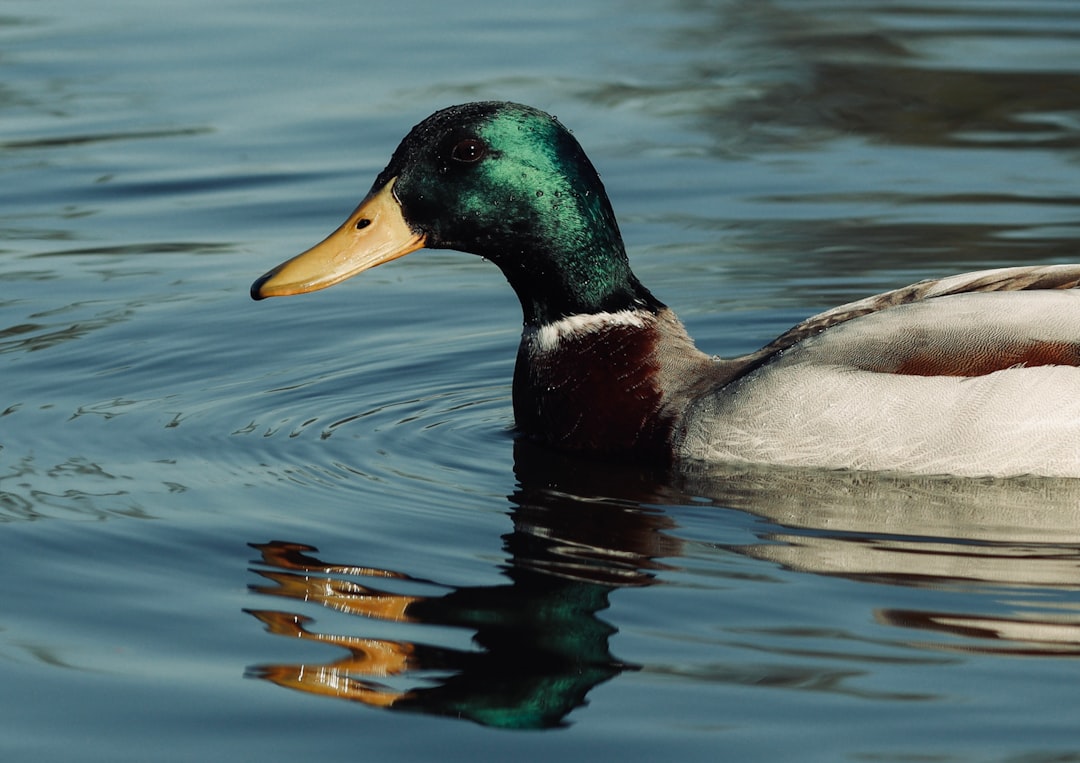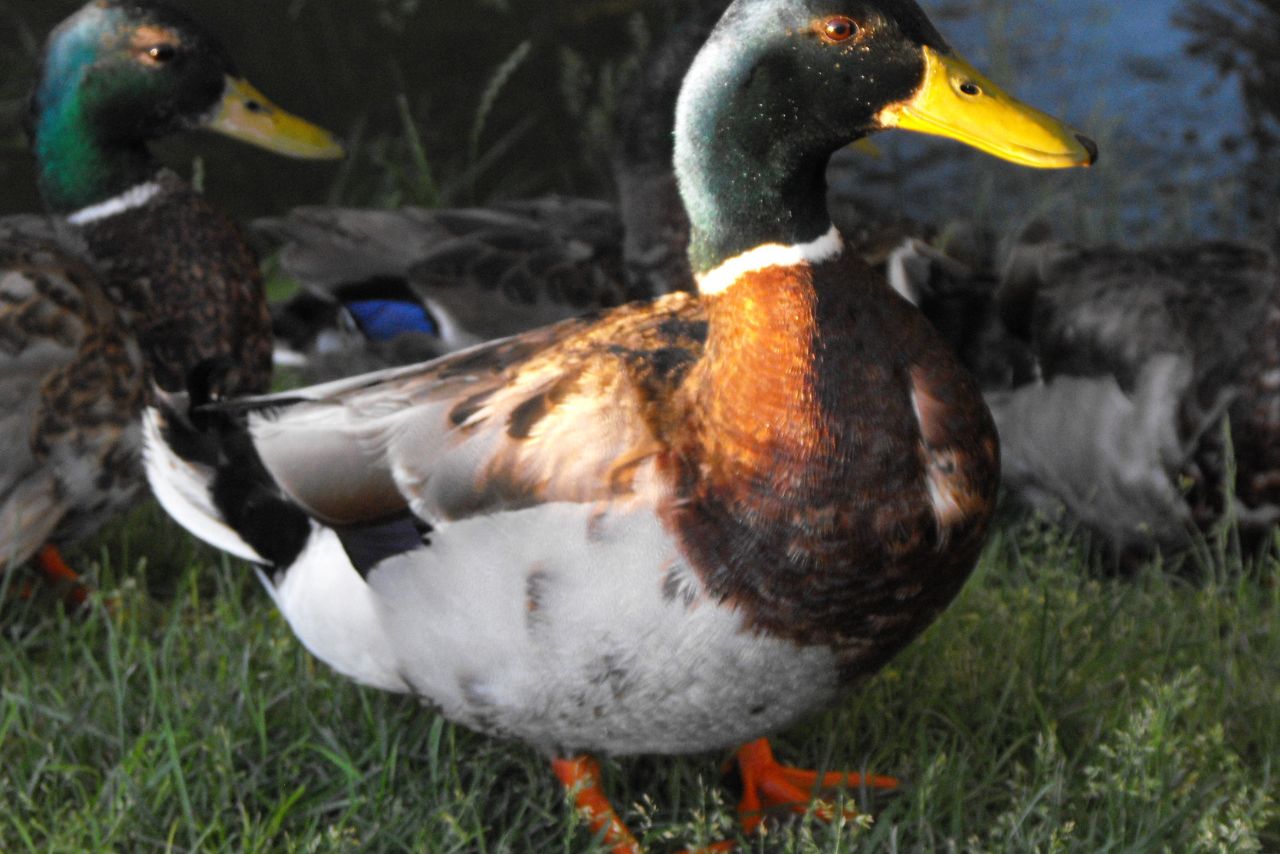Ducks are fascinating creatures that can be found in various water bodies. They are known to be excellent swimmers and divers, spending most of their time in the water. People often wonder what ducks eat while they are in the water.
What Do Ducks Eat In The Water? Ducks are omnivorous and consume a wide variety of foods while in the water. They primarily feed on aquatic plants, seeds, insects, snails, worms, and small fish.
Some species of ducks are also known to eat small mammals and amphibians.
A duck’s diet depends on its habitat and the availability of food sources. A balanced and nutritious diet is crucial for a duck’s overall health and survival.
In this blog post, we will explore the different types of food that ducks consume while they are in their natural habitat. We will also discuss how their diet affects their overall health and well-being.
What Do Ducks Eat In The Water?
Ducks eat a variety of things in the water, including:
Aquatic plants: Ducks eat a wide variety of aquatic plants, such as pondweed, algae, sedges, and mosses. They use their bills to filter these plants out of the water.
Insects: Ducks are also fond of insects, and they will eat a variety of aquatic insects, such as pond skaters, diving beetles, and snails. They will also eat small fish, fish eggs, and amphibians.
Seeds: Some ducks, such as mallards, will also eat seeds and grains. They will often graze on land for these foods, but they will also eat them in the water.
The exact diet of a duck will vary depending on the species of duck, the time of year, and the availability of food. However, all ducks are opportunistic feeders, and they will eat whatever is available to them.
Here is a more detailed breakdown of what different types of ducks eat in the water:
Dabbling ducks: Dabbling ducks are the most common type of duck, and they are found in both freshwater and saltwater habitats. They have broad bills that are adapted for sifting through water to find food.
Dabbling ducks eat a variety of aquatic plants, insects, and small fish.
Diving ducks: Diving ducks are less common than dabbling ducks, but they are better at diving underwater to find food. They have long, narrow bills that are adapted for catching fish.
Diving ducks eat a variety of fish, as well as some aquatic plants and insects.
Mergansers: Mergansers are a type of diving duck that has a specialized bill with serrations that help them catch fish. They are the only type of duck that eats a significant amount of fish.
Mergansers eat a variety of fish, including salmon, trout, sticklebacks, minnows, and eels.
No matter what type of duck they are, all ducks play an important role in the ecosystem by helping to control populations of insects and other aquatic animals. They are a source of food for humans, and they are often hunted for sport.
Types of Dabbling Ducks
Here are 5 types of dabbling ducks. These dabbling ducks can be found in various wetland habitats, such as marshes, ponds, and lakes.
1. Mallard Duck: This is perhaps the most common dabbling duck. The male has a distinct green head and yellow bill, while the female has a mottled brown appearance.
2. Northern Pintail: The male Northern Pintail has a long, pointed tail and a distinctive white neck stripe, while the female has a duller brown appearance.
3. American Wigeon: This duck has a unique appearance with a green patch on its head and a white crown. The female has a mottled brown appearance.
4. Green-winged Teal: The male Green-winged Teal has a chestnut head and a green patch on its wing, while the female has a mottled brown appearance.
5. Northern Shoveler: This duck has a distinctive long, spoon-shaped bill. The male has a green head and a white chest, while the female has a mottled brown appearance.
Types of Diving Ducks
Here are five types of diving ducks you should know about:
1. Bufflehead: These small ducks have striking black and white plumage, and are known for their agility underwater. They can dive up to 20 feet deep to feed on crustaceans and other aquatic life.
2. Canvasback: A large and handsome duck, the canvasback is named for its distinctive red head and white back. They are strong divers and can remain underwater for up to 30 seconds at a time.
3. Redhead: Easily recognized by its bright red head and gray body, the redhead is a popular game bird for hunters. They dive for food, but also have a habit of “tipping” – upending themselves to feed on shallow water plants.
4. Ring-necked duck: These ducks have a distinctive white ring around their necks, and are typically found in freshwater habitats. They dive frequently and can stay underwater for up to 20 seconds.
5. Scaup: The scaup is a medium-sized diving duck with a dark head and white sides. They are strong swimmers and divers, and are known for their ability to dive suddenly and disappear for long periods of time.
Feeding Habits Of Different Ducks In Water

The feeding habits of ducks in the water vary depending on their species and behavior.
Some dabbling ducks will filter out tiny organisms and seeds from the water’s surface, while diving ducks can dive up to 20 feet deep to catch small fish and crustaceans.
1. Plant Matter
Plant matter is an essential part of a duck’s diet. They rely on aquatic plants like pondweeds, duckweed, and algae for their daily nutritional requirements.
These plants are rich in protein, fiber, and other essential nutrients that help ducks maintain their health and immune system. Many dabbling ducks also feed on terrestrial plants like grasses, clovers, and grains.
Pondweeds
Pondweeds are a type of aquatic plant that is commonly consumed by ducks. They are an excellent source of protein and fiber, as well as vitamins and minerals like calcium, potassium, and iron.
Duckweed
Duckweed is another type of aquatic plant that ducks consume. This floating plant is rich in protein, fat, and other essential nutrients that help ducks build strong muscles and maintain their energy levels.
They are also a great source of amino acids, which aid in the growth and repair of tissues in ducks’ bodies.
Algae
Algae are a type of aquatic plant that provide essential nutrients to ducks in the water. They contain high levels of protein, vitamins, and minerals like iron and potassium.
Algae also help to improve water quality by reducing the amount of harmful bacteria and pollutants in the water.
Other Plant Matter
Other plant matter that ducks consume include seeds and fruits. Seeds from grasses, sedges, and rushes are a staple in the diets of many dabbling duck species.
They also feed on berries, nuts, and acorns found near the water’s edge.
2. Animal Matter
In addition to plant matter, ducks also consume animal matter such as insects, snails, and crustaceans that are found in the water. They also feed on small fish and tadpoles.
Invertebrates

Apart from plant matter, ducks also consume a variety of invertebrates. Dabbling ducks filter out small aquatic organisms like snails, worms, and insects from the water’s surface.
These invertebrates provide essential protein and other nutrients needed for growth and development.
Insects
Many dabbling ducks also consume insects like flies, mosquitoes, beetles, and dragonflies. Insects are an excellent source of protein for ducks, especially during breeding season when they require more energy.
Worms
Ducks also feed on worms, which are rich in protein and other essential nutrients. They can find worms in the mud at the bottom of ponds or by foraging in wet soil near the water’s edge.
Worms are an important part of a duck’s diet, especially during the breeding season when they need more energy to produce eggs and raise their young.
Fish And Crustaceans
Diving ducks feed primarily on small fish, crayfish, and other crustaceans found in freshwater habitats. These foods provide them with high amounts of protein and fat required for energy during long migrations.
Are Ducks Omnivores?
Yes, ducks are omnivores. They have a varied diet that consists of both plant and animal matter. Their feeding behavior is unique, as they often feed in groups and submerge their heads in the water to search for food.
They have a specialized beak that helps them filter out food from the water. Ducks rely heavily on aquatic plants like pondweeds, duckweed, and algae for their daily nutritional requirements.
They also consume terrestrial plants like grasses and grains found near the water’s edge.
Do Ducks Eat Fish In Water?

Yes, diving ducks do eat fish and other aquatic animals like crayfish and mollusks. They have adapted to dive underwater to catch their prey, using their strong wings to swim and chase after their food.
However, it’s important to note that not all duck species consume fish. Dabbling ducks, for example, primarily feed on plant matter and invertebrates found in the water.
Do Ducks Eat Frogs In Water?
Yes, ducks do eat frogs. They are known to consume tadpoles and small frogs found in the water. However, it’s important to note that not all duck species feed on frogs.
Frogs can provide a good source of protein for ducks, but it’s crucial to ensure that the frogs they consume are not carrying any harmful toxins or diseases.
Do Ducks Have Gizzards?
Yes, ducks have gizzards. The gizzard is a specialized muscular organ found in the digestive tract of birds that helps break down tough food items like seeds and insects.
Ducks, like other birds, lack teeth and rely on their gizzards to grind up their food before further digestion takes place. In addition to their gizzards, ducks also have special adaptations in their beaks that help them filter out food from the water.
Watch Video: What Do Ducks Eat In The Water?
Conclusion: What Do Ducks Eat In The Water?
Ducks have a varied diet that includes both plant and animal matter. They rely heavily on aquatic plants for their daily nutritional requirements, but also consume invertebrates, fish, and crustaceans found in freshwater habitats.
Providing a balanced and nutritious diet is crucial for their overall health and well-being. It’s important to consult with a veterinarian or animal nutritionist for advice on what to feed pet ducks if you plan on keeping one as a companion animal.
By understanding what ducks eat in the wild, we can better provide for their dietary needs and ensure that they remain healthy and thriving members of their natural habitats.
So next time you see ducks in the water, take a moment to appreciate their unique feeding behavior and the diverse range of foods they consume to survive.
FAQs
What Do Ducks Eat in The Water?
Ducks eat a variety of things in the water, including aquatic plants, invertebrates, fish, and crustaceans.
Are Ducks Omnivores?
Yes, ducks are omnivores and eat both plant and animal matter.
Do Ducks Eat Frogs?
Yes, some duck species eat frogs, but it’s important to ensure the frogs are not carrying harmful toxins or diseases.
Do Ducks Have Gizzards?
Yes, ducks have gizzards, which help them break down tough food items like seeds and insects.
What Should I Feed My Pet Duck?
It’s best to consult with a veterinarian or animal nutritionist for advice on what to feed pet ducks to ensure they have a balanced and nutritious diet.




